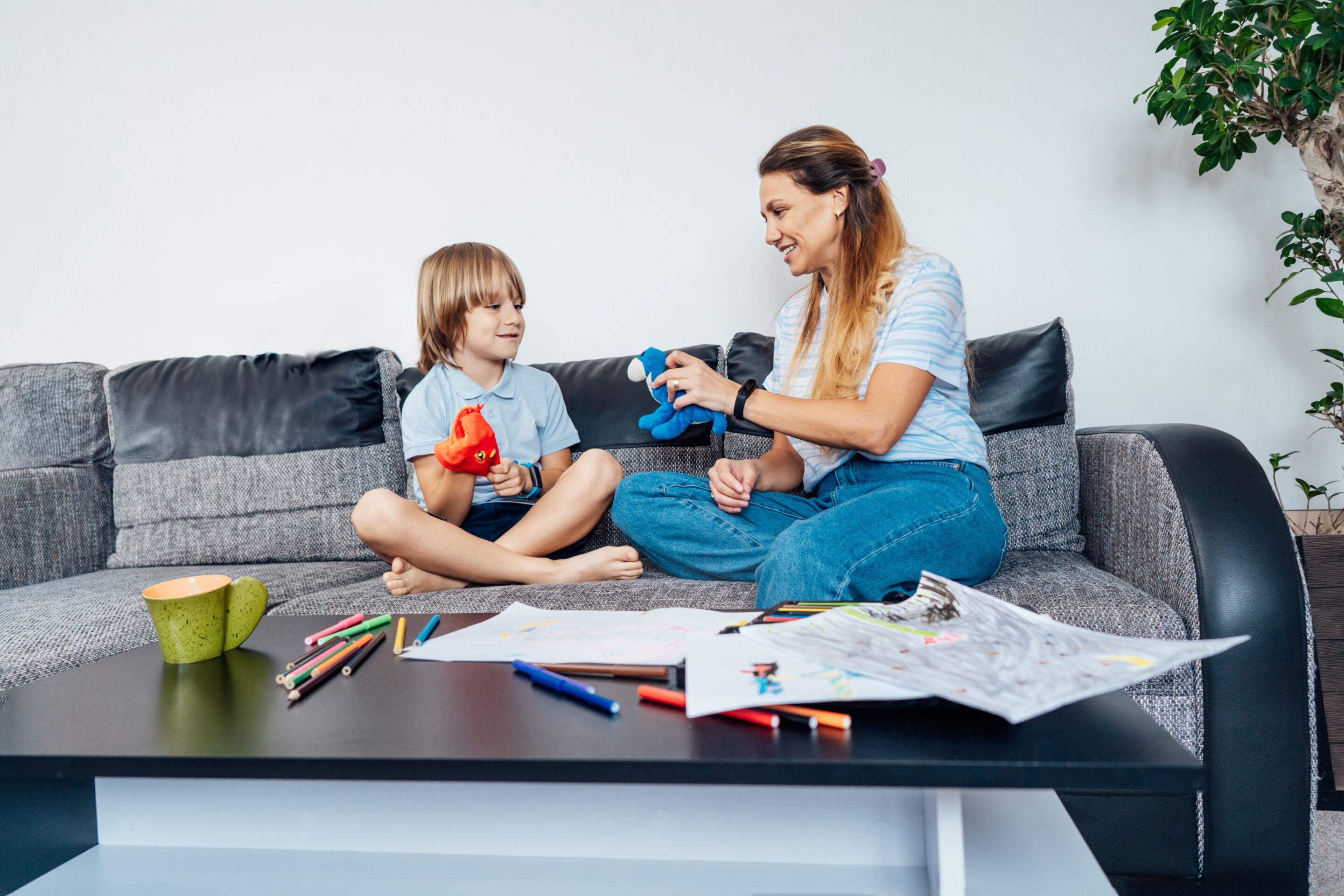ABA therapy offers many benefits, including improved communication and social skills and decreased harmful or interfering behaviors. However, meaningful progress doesn’t happen through therapy sessions alone. For the best possible outcomes, parents and caregivers must reinforce therapy goals at home. Families play a critical role in their child’s success.
Attend Caregiver Training Sessions
First things first — attend caregiver training sessions with your BCBA. Consistent attendance and engagement during these meetings will empower you with the knowledge and skills to reinforce your child’s therapy progress at home. During caregiver training, your BCBA will teach you about the foundations of ABA, discuss your child’s goals and progress and help troubleshoot any barriers. Use this time to ask questions and practice techniques. The more confident you are, the more effective you’ll be at supporting your child’s growth.
Incorporate Learning into Your Daily Routines
You don’t necessarily need to set aside large chunks of time. There are endless opportunities to naturally incorporate learning into your daily activities. For example, if your child is learning how to request items, pause before handing them something to allow them an opportunity to do so.
Additionally, plan ahead to allow some buffer time in your day. This will make it easier for you to support your child in practicing daily living skills without feeling rushed. For example, give yourself extra time in the morning so your child can practice getting dressed independently.
Practice Mastered Therapy Goals
As your child masters ABA therapy goals, the next step involves generalizing the skill. Generalization means your child can demonstrate the skill with different people, settings and stimuli. Maintain open communication with your BCBA, so you know when skills are mastered and ready for the generalization phase.
Help your child practice mastered skills by:
- Varying communication partners: Have different people (e.g., parents, siblings, family, friends) test your child on skills they’ve mastered.
- Varying the setting: Practice skills at home, at school, in the park, at the grocery store, in restaurants or anywhere you go with your child.
- Introducing different stimuli: Make sure your child can apply the skill with different materials. For example, if they learned to tie their shoes using one specific pair, they should also practice shoe tying with other pairs.
Follow the Behavior Intervention Plan (BIP)
If your child exhibits behaviors that interfere with their ability to learn and interact with others, your BCBA will implement a Behavior Intervention Plan (BIP). This plan outlines strategies for preventing and responding to those behaviors. To increase the likelihood of success, everyone must be on the same page in following the BIP. If there are barriers to implementing the strategies outlined in the plan, work with your BCBA to troubleshoot and address them.
Use Positive Reinforcement
Positive reinforcement involves adding something desirable after a specific behavior to make it more likely that your child will engage in that behavior again. Positive reinforcement is at the heart of ABA and is deeply embedded into therapy sessions.
When your child engages in appropriate behaviors or demonstrates a newly learned skill, reinforce their success! Here are a few ideas on how to use positive reinforcement at home.
- Give behavior-specific praise, emphasizing what they did well. For example, instead of saying, “Good job,” say, “Wow, I love how you’re using a calm voice!”
- Offer rewards that your child finds motivating. These can be tangible items, such as a toy, or activities, like a trip to the playground.
- Provide physical attention, like high-5’s, fist bumps, and tickles.
- Celebrate effort, not just success. Be sure to reinforce attempts and approximations toward a desired behavior, especially with new or challenging skills.
Keep in mind that reinforcement is an individualized process—what works for one child may not work for every child.
Consistency is Key
Consistency and patience are essential. Work with your child’s therapy team to ensure the continuation of therapy progress outside of therapy sessions. And don’t forget to celebrate the small wins! Every step forward is progress.

